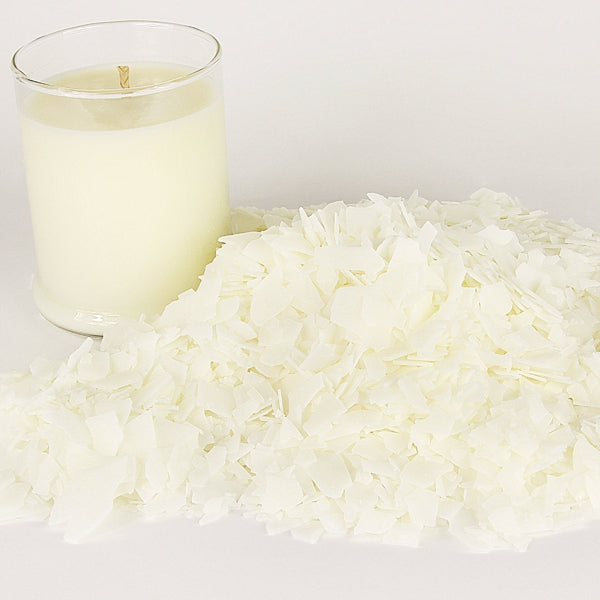From Wick to Wax: Comprehending the Chemistry Behind Soy Wax Candles and Their Environmental Effect
As we illuminate our rooms with the warm glow of candles, there lies a world of elaborate chemistry behind the apparently straightforward act of lighting a soy wax candle. The choice in between soy and paraffin wax extends beyond simple aesthetic appeals, diving into the world of ecological impact and the extremely composition of the products. Recognizing the molecular framework of soy wax and its burning procedure clarifies the emissions released right into our environments. Join us as we decipher the scientific details behind soy wax candles and discover their implications on our atmosphere.
Soy Wax Vs. Paraffin Wax
When contrasting soy wax and paraffin wax for candle making, it is important to comprehend the unique characteristics and benefits of each product. Soy wax is an all-natural, renewable source originated from soybean oil, making it naturally degradable and green - soy candles. On the other hand, paraffin wax is a by-product of oil refining, which elevates worries concerning its ecological effect and sustainability
Soy wax candles melt cleaner and give off much less soot compared to paraffin wax candle lights, making them a healthier choice for indoor air quality. Additionally, soy wax has a lower melting factor, enabling a longer-lasting candle that disperses scent better. Paraffin wax, on the other hand, often tends to burn faster and much less easily, possibly releasing harmful chemicals into the air.
From a sustainability perspective, soy wax is preferred for its biodegradability and sustainable sourcing, aligning with the expanding customer choice for eco conscious products. While paraffin wax has been a conventional choice in candle light making as a result of its affordability and simplicity of use, the change towards eco-friendly options like soy wax is getting energy in the industry.
Chemical Make-up of Soy Wax

Combustion Process in Soy Candles
The chemical structure of soy wax directly affects the combustion procedure in soy candles, affecting variables such as shed time, scent release, and ecological effect. When a soy candle is lit, the heat from the fire melts the wax near the wick. This fluid wax is then prepared the wick due to capillary action. As the fluid wax gets to the fire, it goes through and vaporizes burning. The combustion procedure includes the vaporized hydrocarbons in the wax reacting with oxygen in the air to produce warm, light, water vapor, and carbon dioxide.
The combustion effectiveness of soy candle lights is affected by the pureness of the soy wax and the high quality of the wick. In addition, soy wax candle lights have a lower environmental impact contrasted to paraffin candles due to their eco-friendly and renewable nature.

Ecological Advantages of Soy Wax

Considered a sustainable option to conventional paraffin wax, soy wax supplies significant ecological advantages that make it a preferred choice among eco-conscious customers. Soy wax burns cleaner and creates less residue than paraffin wax, adding to better interior air quality and minimizing the demand for cleaning and maintenance. Overall, the environmental advantages of soy wax align with the growing need for sustainable and environment-friendly products in the market.
Recycling and Disposal Considerations
Recycling and appropriate disposal of soy wax candle lights play a vital duty in maintaining environmental sustainability and reducing waste in areas and households. When it concerns recycling soy wax candle lights, the primary step is to ensure that the candle has shed entirely. This can be attained by enabling the candle light to shed until the wick is no much longer usable, and then allowing the staying wax cool and strengthen. As soon as the wax has strengthened, it can be carefully gotten rid of from the container.

In regards to disposal, if recycling is not an alternative, soy wax candle lights are biodegradable and can be securely disposed of in most home waste systems. It is constantly suggested to check with neighborhood reusing facilities or waste monitoring services for specific standards on candle disposal to guarantee correct handling and environmental defense.
Final Thought
To conclude, the chemistry behind soy wax candle lights discloses their environmental benefits over paraffin wax candles candles. Soy wax, obtained from soybean oil, burns cleaner and creates less residue when compared to paraffin wax. The burning process in soy candles is more efficient, resulting in a longer and extra even burn. Furthermore, soy wax is renewable and biodegradable, making it a much more lasting selection for candle production. Reusing and appropriate disposal of soy wax candles additionally add to their ecological effect.
When comparing soy wax and paraffin wax for candle light production, it is vital to recognize the distinct features and benefits of each material (candles).Soy wax candle lights burn cleaner and discharge less soot compared to paraffin wax candles, making them a healthier option for interior air quality.Thought about a lasting option to typical paraffin wax, soy wax supplies noteworthy ecological advantages that make it a preferred selection among eco-conscious consumers. Soy wax burns cleaner and generates much less soot than paraffin wax, contributing to much better interior air high quality and reducing the need for cleaning and maintenance.In conclusion, the chemistry behind soy wax candles exposes their environmental advantages over paraffin wax candles